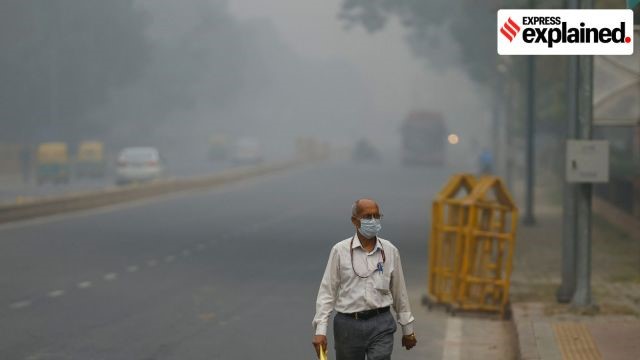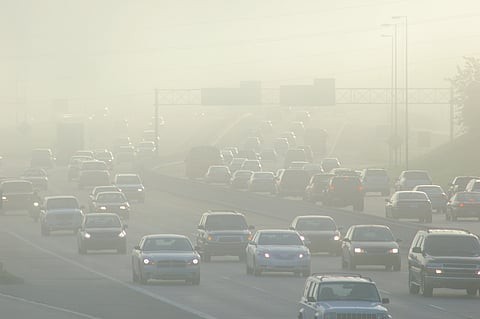



GS-3, Environment, Indoor air pollution, IAQ, air quality in India, health and environment, pollution mitigation, household pollution, PM2.5 and PM10, carbon monoxide, VOCs, government initiatives, sustainable living, urban health, environmental awareness, clean air solutions.

Copyright infringement not intended
Picture Courtesy: Indian Express
Researchers at BITS Pilani Hyderabad have developed India’s first customized Indoor Air Quality scale. Unlike conventional air purifiers that measure only particulate matter, this scale tracks all key indoor pollutants.
Indoor air pollution refers to the presence of harmful substances in the air inside homes, offices, schools, or other enclosed spaces that can negatively affect human health. Unlike outdoor pollution, indoor pollution comes from sources within the building itself or from pollutants entering from outside.
Common sources include:
Pradhan Mantri Ujjwala Yojana (PMUY):
National Biomass Cookstoves Programme (NBCP): Promotes energy-efficient and low-emission stoves in rural areas.
Solar and electric cooking initiatives: Pilot programs under Saubhagya and State Renewable Energy Departments encourage solar-based and induction cooking.
Bureau of Indian Standards (BIS): Published standards for indoor air pollutants such as PM2.5, CO, VOCs in public buildings.
National Building Code (NBC) 2016: Encourages adequate ventilation, cross-ventilation, and air exchange rates in residential and commercial buildings.
|
CASE STUDY Clean Cooking under Pradhan Mantri Ujjwala Yojana (PMUY) Background: Many rural households used biomass or kerosene for cooking, causing high indoor air pollution (PM2.5, CO) and health risks like respiratory illnesses. Intervention: PMUY provided free/subsidised LPG connections to women from BPL households to reduce indoor smoke exposure. Awareness campaigns promoted safe LPG use. Outcomes: · Indoor particulate emissions reduced by ~60‑70%. · Significant reduction in exposure for women and children. · Health risks like respiratory illnesses decreased. |
Conclusion:
Indoor air pollution poses serious health and environmental risks, especially in densely populated and poorly ventilated spaces. While initiatives like clean cooking fuels and IAQ monitoring help, lasting improvement requires a combination of awareness, technology, proper ventilation, and policy support.
Source: Indian Express
|
Practice Question Q. Indoor air pollution is an often-overlooked public health challenge in India, with serious health, social, and economic implications. Discuss (150 words) |
Indoor air pollution refers to the contamination of indoor air by harmful pollutants such as particulate matter (PM2.5, PM10), carbon monoxide, volatile organic compounds (VOCs), benzene, radon, and methane, which can originate from cooking, cleaning, construction dust, and poor ventilation.
Indoors, people spend nearly 90% of their time, and pollutants get trapped due to poor ventilation. Cooking with solid fuels, construction dust, incense burning, and household chemicals worsen air quality, increasing health risks.
IAP can cause respiratory diseases (asthma, bronchitis, COPD), cardiovascular problems, allergies, reduced immunity, sick building syndrome, and in severe cases, cancer. Women and children are most vulnerable.







© 2025 iasgyan. All right reserved